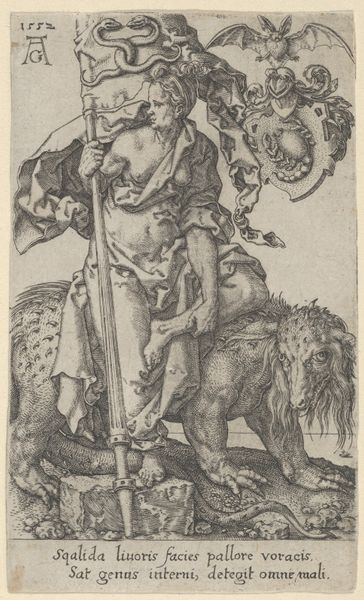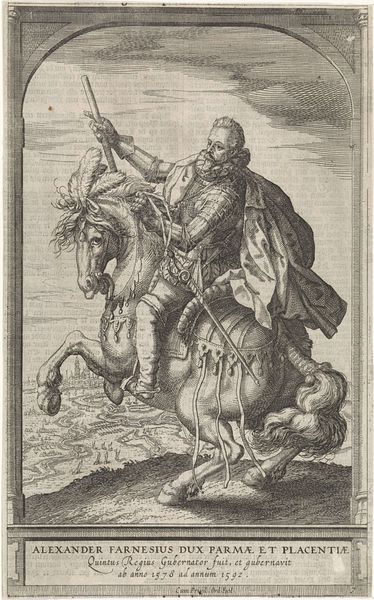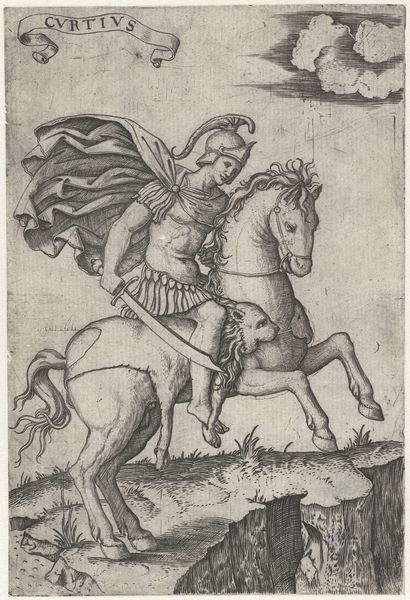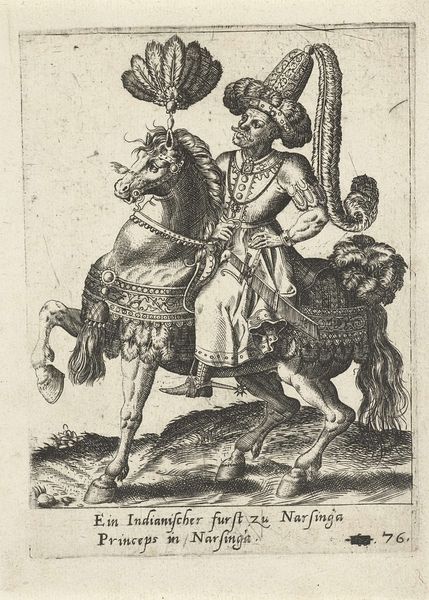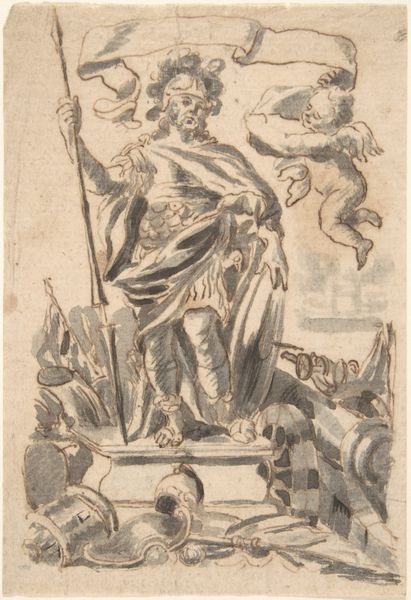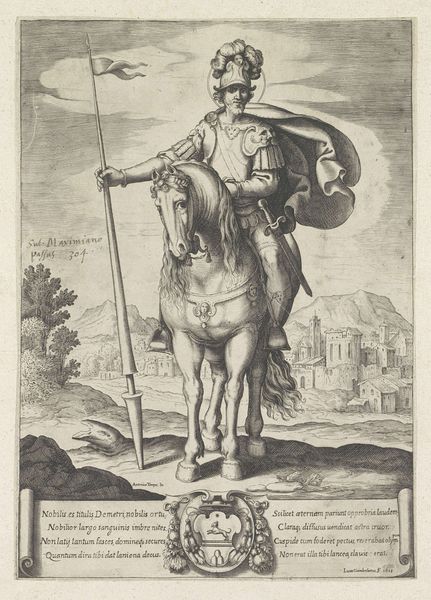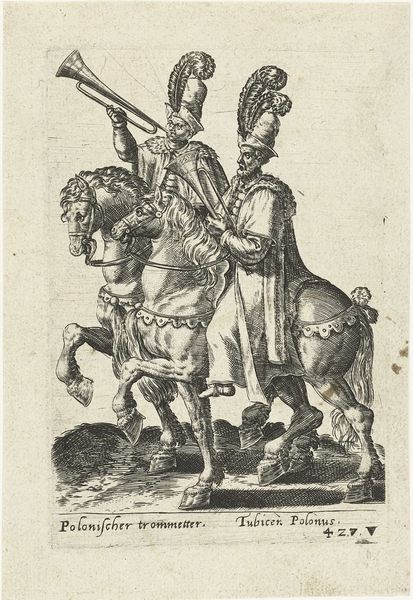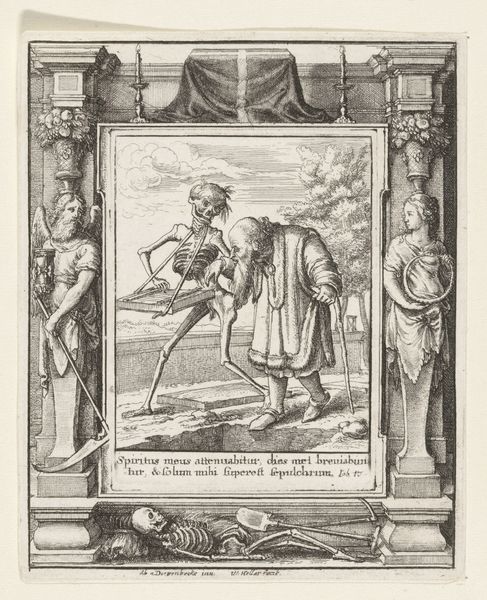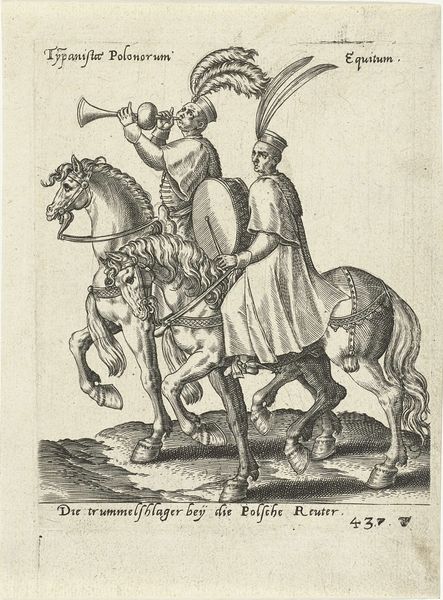
print, etching, engraving
#
portrait
#
baroque
# print
#
etching
#
asian-art
#
old engraving style
#
figuration
#
line
#
cityscape
#
history-painting
#
engraving
Dimensions: height 263 mm, width 179 mm
Copyright: Rijks Museum: Open Domain
Curator: I’m drawn to the dynamism of this print, "Equestrian Portrait of a King of China" by Philips Serwouters, dating sometime between 1601 and 1650. Editor: It definitely captures a sense of power and authority, even in this small etched form. The line work is striking, almost stark, given the subject matter. What is the historical context that shaped this particular rendering? Curator: It’s fascinating because prints like these, especially engravings, were about dissemination. Consider the labor: the craftsman creating the plate, the paper production, and then the widespread distribution. The “King of China,” presented within this Baroque framework, reflects a specific European perspective and projection of power onto the East. Note the detail of the city in the background. Editor: Exactly. This is not just a portrait; it's a statement about intercultural understanding, or rather, a Western interpretation of Eastern rule. I wonder about the socio-political currents at the time. The engravings "translated" the "exotic East" for a European audience, so what were they trying to say through this act of visual representation, through a powerful European lens, perhaps solidifying a sense of cultural dominance? What ideological work is it performing? Curator: That's astute. This print utilizes lines and textures achievable through etching and engraving, giving form to ideas circulating about the Orient. Furthermore, the means of production also democratized access, even if filtered through a specific European artistic lens. Its Baroque style indicates it may have also influenced contemporary fashion trends. The hat, the billowing fabric, the rearing horse, it is a moment frozen in time that captures both power and the materials of its creation. Editor: So it becomes both a symbol of the depicted king’s authority, and also, for a modern audience, a symbol of Europe's appropriation of an exotic 'Other,' circulated via accessible printmaking technologies. Curator: Absolutely, it prompts reflection on how artistic techniques are employed to disseminate narratives that embody power dynamics, trade routes, and evolving political contexts of early global exchange. Editor: It’s an intriguing confluence of artistic execution and historical forces captured within the stark lines of an etching.
Comments
No comments
Be the first to comment and join the conversation on the ultimate creative platform.
